How to cover bare soil in winter – 6 expert ways
Keep your soil in top form come spring by taking some of these preventative measures
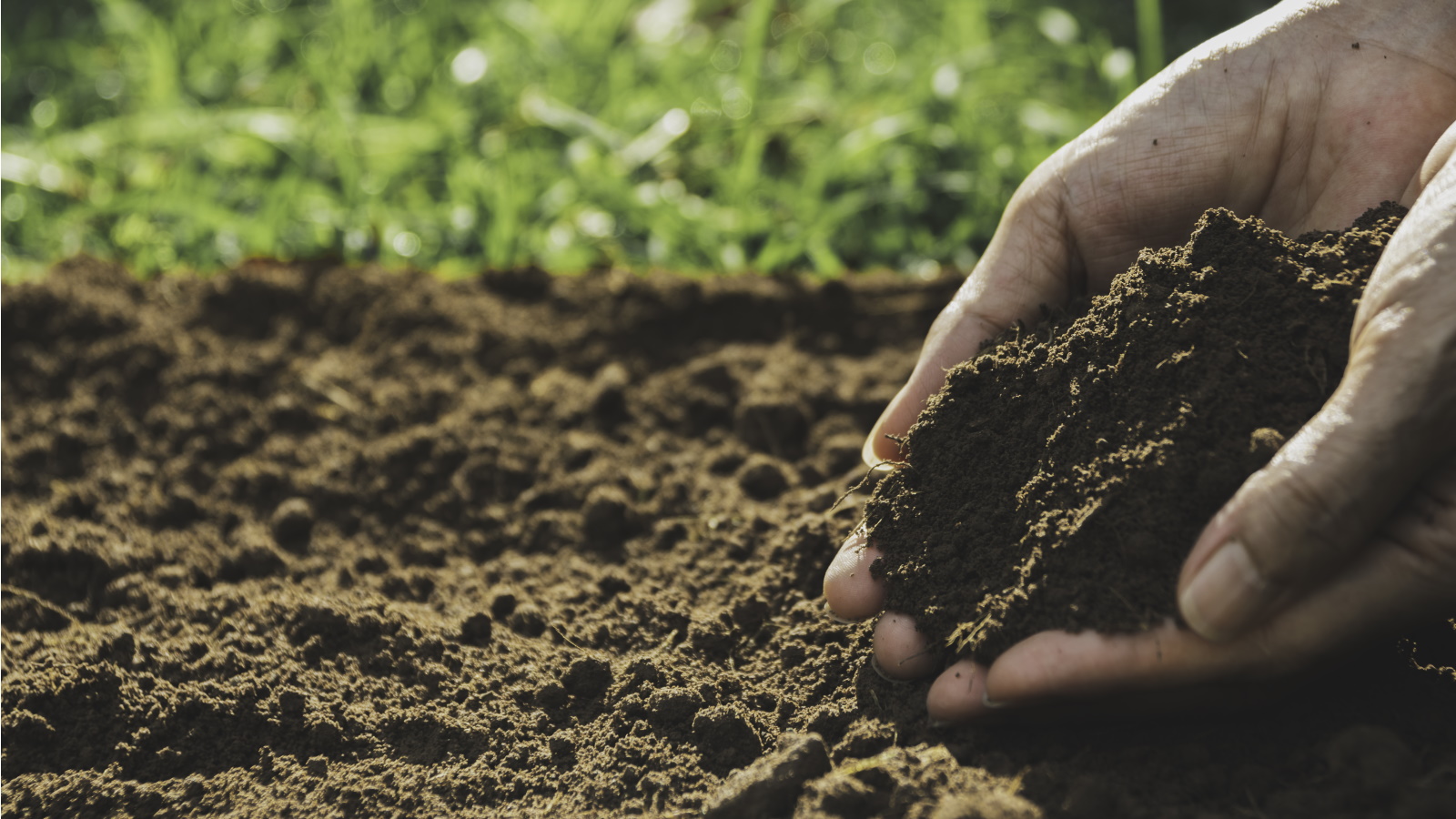

As the colder weather settles in, it's more important than ever to think into the health of your yard, and that doesn't just mean the plants and wildlife.
Any areas of bare soil in your garden, such as the soil in empty beds, require covering over in the winter to protect them from the harshness of the season. If soil is left to face the elements, its quality will quickly deteriorate as it loses moisture, weeds begin to grow, and sediments run off of the top soil.
Knowing how to cover bare soil in winter is a vital part of overwintering a garden, so if it isn't already on your winter gardening checklist, this year it should become an addition. We compiled a guide on six ways you can cover up your bare soil with ease after speaking to a range of gardening experts. You'll be thanking yourself in spring when you're looking to plant new greenery in perfectly-kept soil.
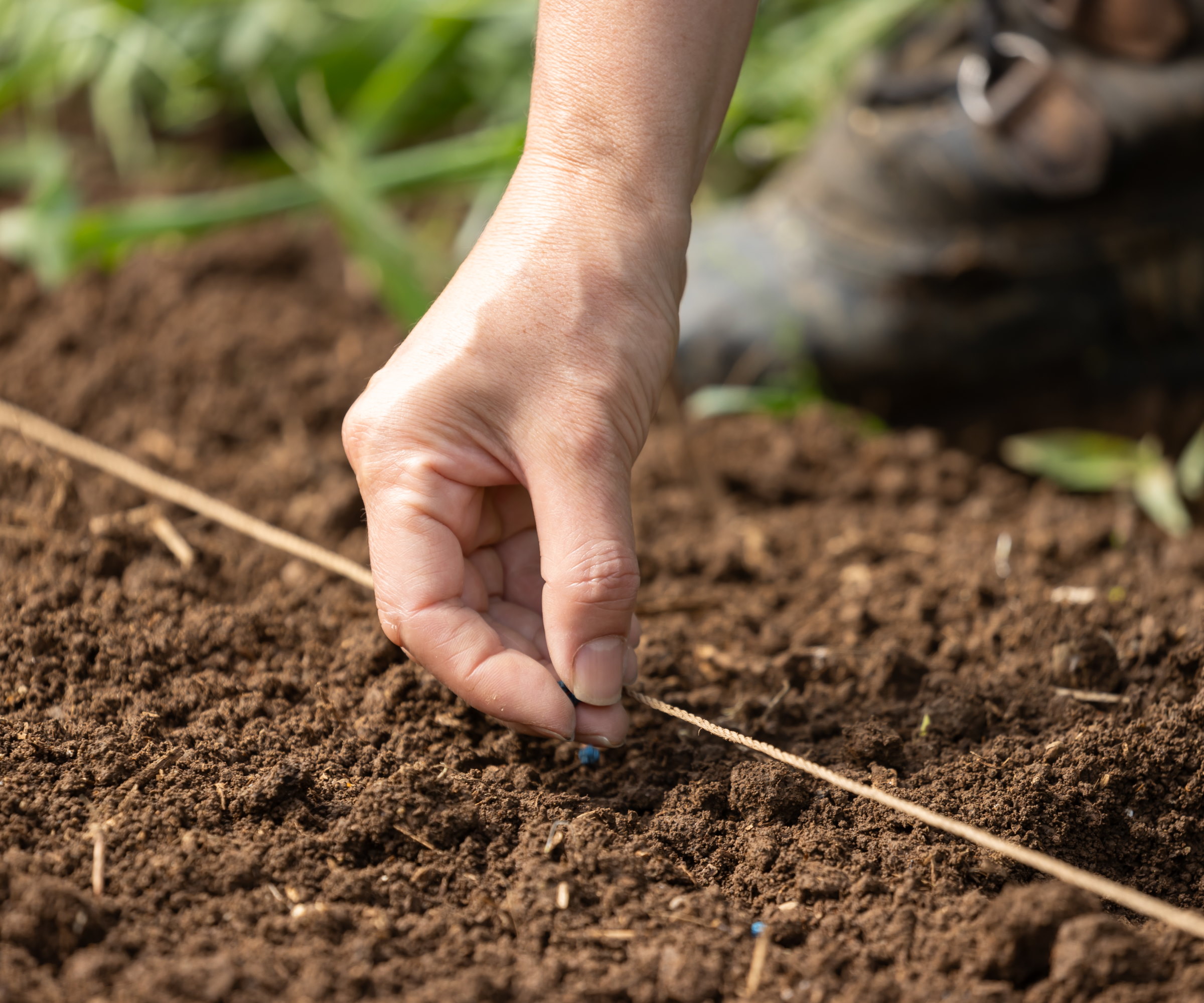
Why does bare soil need covering in the winter?
According to landscape designer and plant expert Alexandra Moreno, there are three key reasons why bare soil is better off being covered over during the winter months.
'Leaving soil unprotected in winter can lead to several harmful effects,' she says.
- Frost damage: 'When temperatures drop below 32°F (0°C), water in the top layers of the soil is prone to freezing.These sudden freezes can damage roots, particularly if they are young or shallow rooted plants. Covering the soil provides much needed insulation that helps prevent frost from penetrating the soil.'
- Moisture loss and erosion: 'Bare soil loses moisture quicker than covered soil, even in the winter. Harsh winds and melting snow or ice can erode exposed soil - depleting it of essential nutrients.'
- Soil deterioration: 'Beneficial microorganisms, which are crucial for maintaining soil health, require a stable environment to survive. Exposure to freezing temperatures and harsh conditions can kill these organisms, reducing the soil's fertility and its ability to support plant growth.'
Here are six ways you can avoid these issues by covering your bare soil this winter.
1. Add a layer of compost
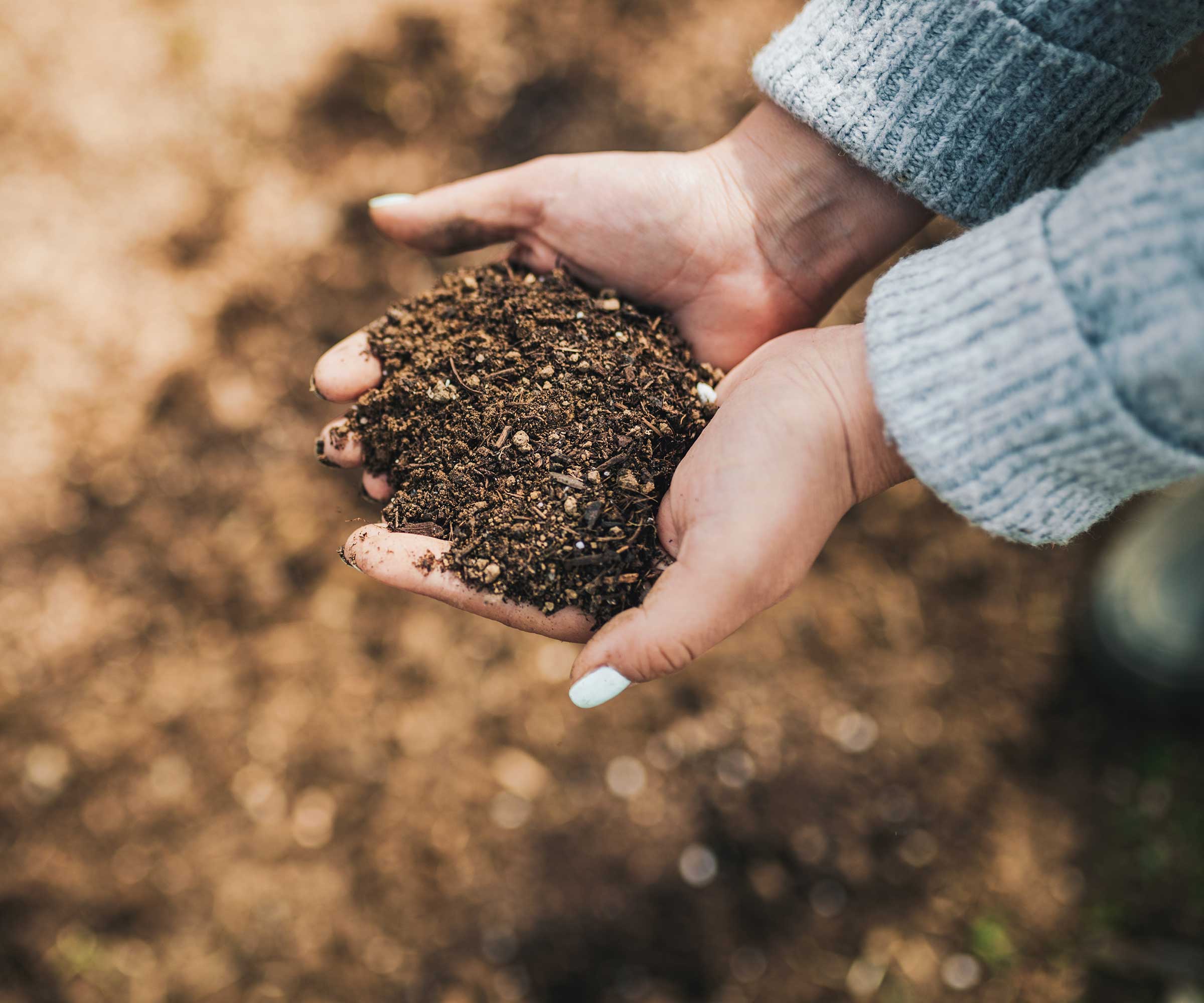
When we're gardening and want to give our plants an extra boost of nutrients, we add in a layer of compost. Doing this helps the plants to grow, protects the surrounding soil, and overall assists in keeping the plant's biome healthy.
Design expertise in your inbox – from inspiring decorating ideas and beautiful celebrity homes to practical gardening advice and shopping round-ups.
Adding a layer of compost onto your bare soil is a great way to boost soil nutrients and have it in top form for when it comes time to planting, too - you don't have to have plants in the soil to reap the benefits of compost.
Jessica Mercer, senior content marketing coordinator and plant expert at Plant Addicts, says: 'Compost enriches the soil with nutrients and beneficial microorganisms and protects bare soil from erosion. All you need to do is spread a one to two inch layer of well-rotted compost over the soil's surface, and your soil will be adequately covered.'
You can lightly mix the topsoil and compost together if you wish to help it integrate but leaving it be is better for the soil, as it'll increase coverage and integrate on its own anyway.
Jessica recommends using Plant Addict's compost, such as the espoma organic land and sea gourmet compost as it is particularly high in nutrients designed to revitalize soil.
Amazon's earthworm casting all natural plant fertilizer and soil enhancer is another great option, too.
2. Add a layer of organic mulch
Adding a layer of organic mulch over the top of your yard's bare soil works to much the same effect as adding over a layer of compost, except it offers slightly more insulation.
'Mulching for winter protection is one of the most recommended soil covers because it acts as an insulator, helping to maintain a consistent soil temperature,' says Alexandra. 'Mulch also prevents moisture loss, reduces erosion, and enriches the soil with organic matter as it decomposes.'
You can buy bags of pre-made mulch such as Amazon's natural cedar shavings or the SuperMoss coco mulch, also from Amazon. But many materials you likely already have in your yard can be used to cover over you bare soil beds.
Sally McCabe, Associate Director of Community Education at the Pennsylvania Horticultural Society (PHS), says: 'Mulch can be compost, wood chips, fallen leaves, mowed leaves, half-rotted leaves... many things.'
'Spread a two to four inch layer of organic matter over your bare soil, doing your best to keep it away from the bases of trees and shrubs to prevent moisture-related diseases,' says Jessica.
Sally recommends recycling your fall leaves to create a great organic cover for your bare soil: 'Instead of raking up and disposing of all the leaves in the fall, hit them once or twice with the lawnmower to shred them into smaller pieces, and rake that into your garden beds. Here it can multitask as insulation, home for beneficial insects (like lightning bugs and worms) and a source of food for plants and microorganisms as it breaks down.'

Jessica Mercer, PhD, is the Senior Content Marketing Coordinator for Plant Addicts. As a “plant collector”, Jessica enjoys growing many different plants and learning about the best cultural practices for each. Writing for Plant Addicts is a real joy for her, as she can use her science background to research interesting plant topics. She carefully considers how to best present the information to other gardeners, with a focus on sustainability and the environment.
3. Add a layer of manure
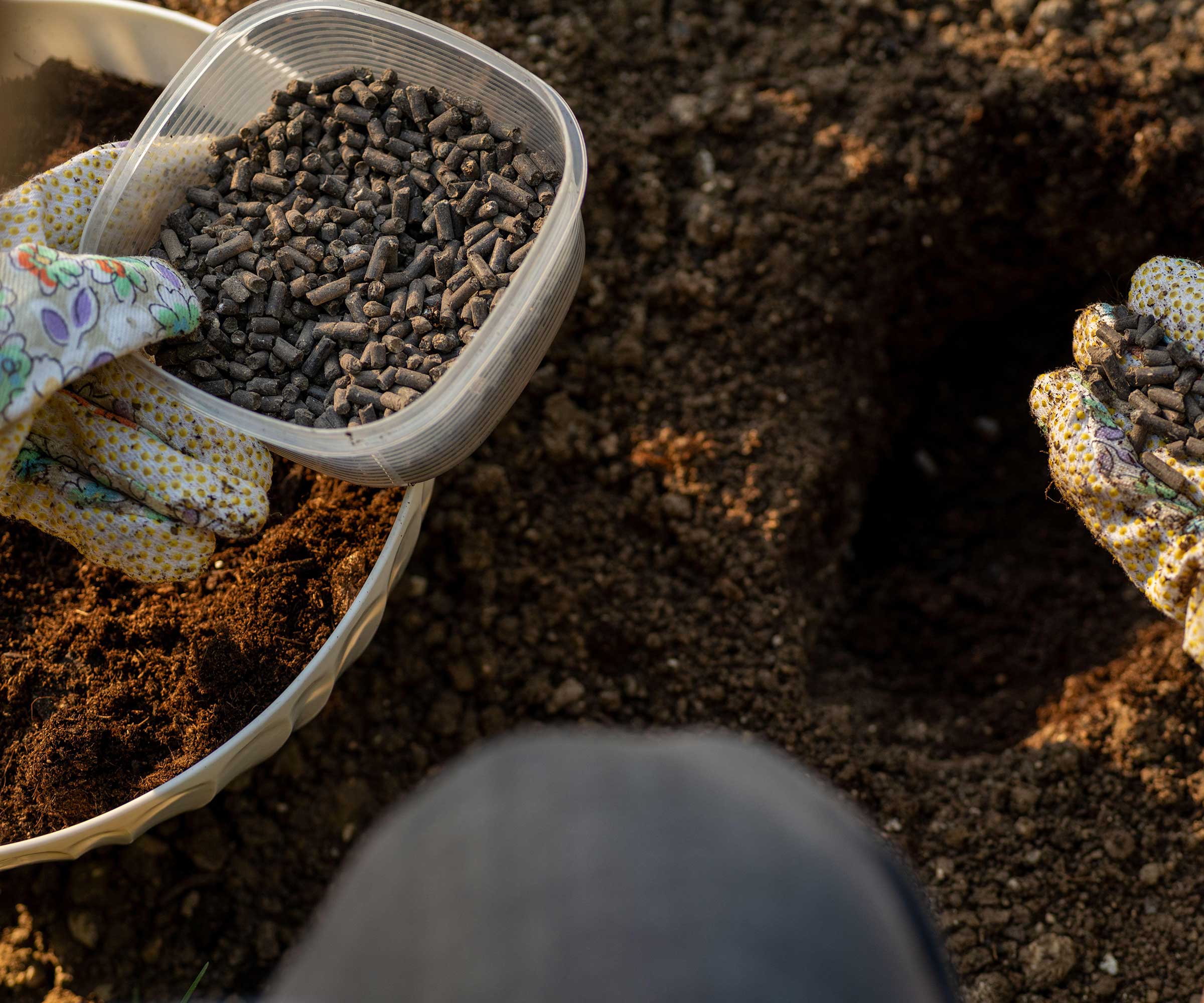
A more fragrant option for sure, but adding a layer of manure over your yard's bare soil comes with many overwintering perks, from locking in the soil's moisture and improving your garden soil to assisting beneficial organisms, such as worms, which will break the manure down for your soil to absorb.
'Well-rotted manure adds nutrients and organic matter, enhancing soil fertility and structure,' says Jessica. 'Apply aged manure over any bare soil, making sure the product you purchase is labeled as suitable for garden use.'
A layer 5-8cm deep should do the trick. Spread this over your bare soil evenly using the back of a trowel for the best results.
The VermisTerra earthworm castings standard bag from Amazon is specified as a garden-use product and isn't messy to use.
4. Cover your bare soil with landscaping fabric
Out of all of ways to cover bare soil in winter, this is the most hands-off approach. If you're looking to quickly cover over your plots of bare soil or winterize raised garden beds without getting into gardening in the cold, placing a tarp or landscaping fabric over your soil will help protect it from the elements.
'Landscape fabric prevents weed growth and erosion while allowing air and water to reach the soil,' says Jessica. 'Simply place the fabric over the soil, securing it with landscape staples. Overlap edges to fully cover the area.'
It's recommended to choose a breathable, UV-resistant fabric for the job to ensure that your soil doesn't completely dry out and attract sunlight (which is still there in the winter, even if it's for shorter bursts).
The Laveve weed barrier landscape fabric from Amazon is highly permeable, allowing airflow, and it also comes with 20 U-shaped pegs to secure the fabric into the ground.
Both Alexandra and Sally also advise on the potential concerns that come with using landscaping fabric or tarps, and why you shouldn't opt for a plastic-based tarp to cover your bare soil in the winter: 'Tarping with materials like geotextiles or a plastic sheet is useful for weed suppression and erosion control, but it is not advisable for winter because the plastic traps water and will freeze along with any water that accumulates on its surface,' says Alexandra.
'Avoid covering garden beds with plastic or landscape fabric for the winter if you can and instead opt for other methods,' adds Sally. 'It might look tidy, but it doesn’t do anything to enrich the soil, and can even cause compaction.'

Alexandra worked for Atlanta Palms as a landscape designer and tropical plant and palm expert. She has been designing gardens and providing plant design consulting for over a decade, and prides herself in her extensive knowledge of tropical plants. She works from her home in tropical Colombia, where she gathers daily inspiration for her designs and articles.
5. Grow cover plants
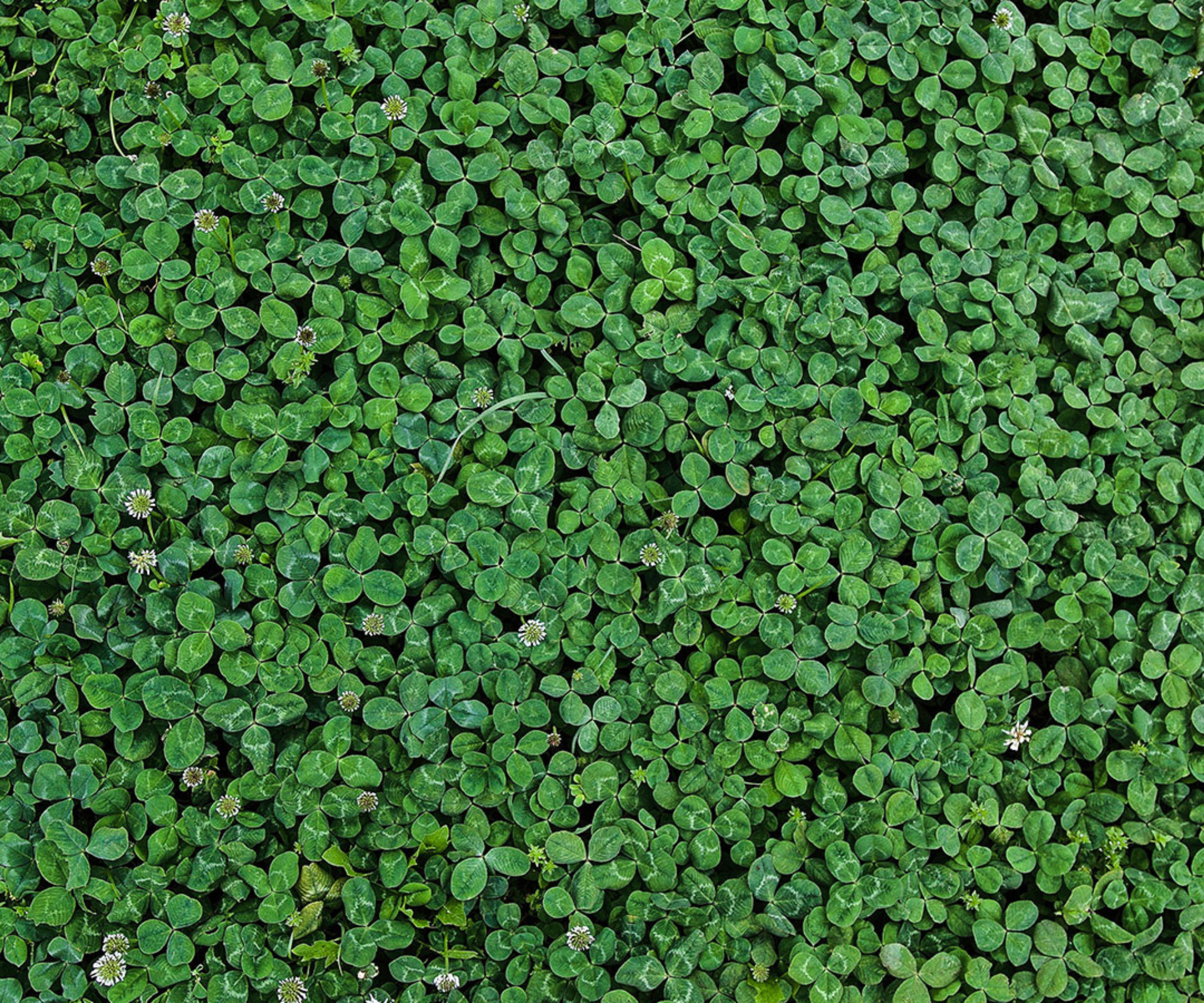
If you don't like the look of empty beds filled with compost or mulch, then boosting your yard's greenery with some fast-growing cover plants may be just what you need for your bare soil beds.
'Cover crops are crops that grow quickly which will shield the bare soil underneath,' says Jessica. 'They capture nutrients that might otherwise leach away and improve organic content when tilled into the soil in spring.'
Some examples of good fast-growing cover plants include clover, rye and mustard. Ideally you should plant your cover crops as early as possible in the winter season while your soil is still relatively undamaged and unfrozen, as it'll be easier for you to work with and easier for your cover crops to germinate.
'There are some hardy cover crops like winter cereal rye which will germinate at colder temperatures but it's better to plant your cover crops before the first winter frost,' says Jessica.
To plant your cover crop, simply sprinkle seeds all across the top of your bare soil and lightly rake the soil until the seeds start to mix in. Then, once planted and lightly watered, lay down a seed cover like the dewitt seed guard gemination blanket from Plant Addicts, or the plant cover for freeze protection from Amazon. This will help protect your cover crops while they first sprout.
'Once the seedlings are established, remove the blanket and allow them to grow over winter; then cut and incorporate them into the soil before planting in spring,' says Jessica.
6. Cover with gravel or stone
If you're looking for another more aesthetically-pleasing way to protect the bare soil in your yard, placing landscaping rocks or gravel over the top is a great option. There are lots of different colors, sizes and styles of rocks out there, so you can choose whichever one you feel best suits the visual of your yard.
'Stone or gravel is a long-lasting and aesthetically pleasing option for covering over bare soil,' says Alexandra. 'It prevents erosion, insulates the soil, and suppresses weeds. This method is particularly useful in gardens near pools or ponds, or areas prone to strong winds, as it keeps the cover in place and avoids messes caused by lighter materials like mulch.'
To do this, all you require is some bags of stones or gravel and a bit of time.
'Spread a layer of stones and/or gravel more or less 3 inches thick over the soil and around any plants,' says Alexandra.
The 2lb jade rocks for plants from Amazon have a very natural finish and would look unobtrusive in your yard. But if you're looking for something a bit more polished, the natural polished mixed color stones, also from Amazon, have an added sheen.
It's recommended to use stones that aren't too tiny, otherwise you will struggle to remove them from your soil in the spring.

Sally McCabe is the Associate Director of Community Education at the Pennsylvania Horticultural Society (PHS). In this role, she is instrumental in leading PHS’s Garden Tenders and Green City Teachers programs and instructs gardeners and educators through workshops that service hundreds of people annually. Sally prompts change at the neighborhood level by working directly with community members, and has been involved with gardening and horticulture for almost 50 years because she passionately believes that it can change the world, one community garden at a time. For 40 of these years, Sally has been at the forefront of PHS Garden Tenders and Green City Teachers.
If you follow one or more of these simple tips, your soil won't deteriorate at a rapid rate over the winter. Come spring, if you're looking to improve soil quality overall, we talked to experts about that as well and it's easy to accomplish.

Ciéra is a writer and regional laureate with particular passions for art, design, philosophy and poetry. As well as contributing to Homes & Gardens, she's an Editorial Assistant for Design Anthology UK and a contributing writer for magazines including Livingetc, Apartment Therapy, House Beautiful and Ideal Home. Previous commendations of hers include being Highly Commended by The Royal Society of Literature and receiving a prestigious MA Magazine Journalism scholarship to City, University of London.